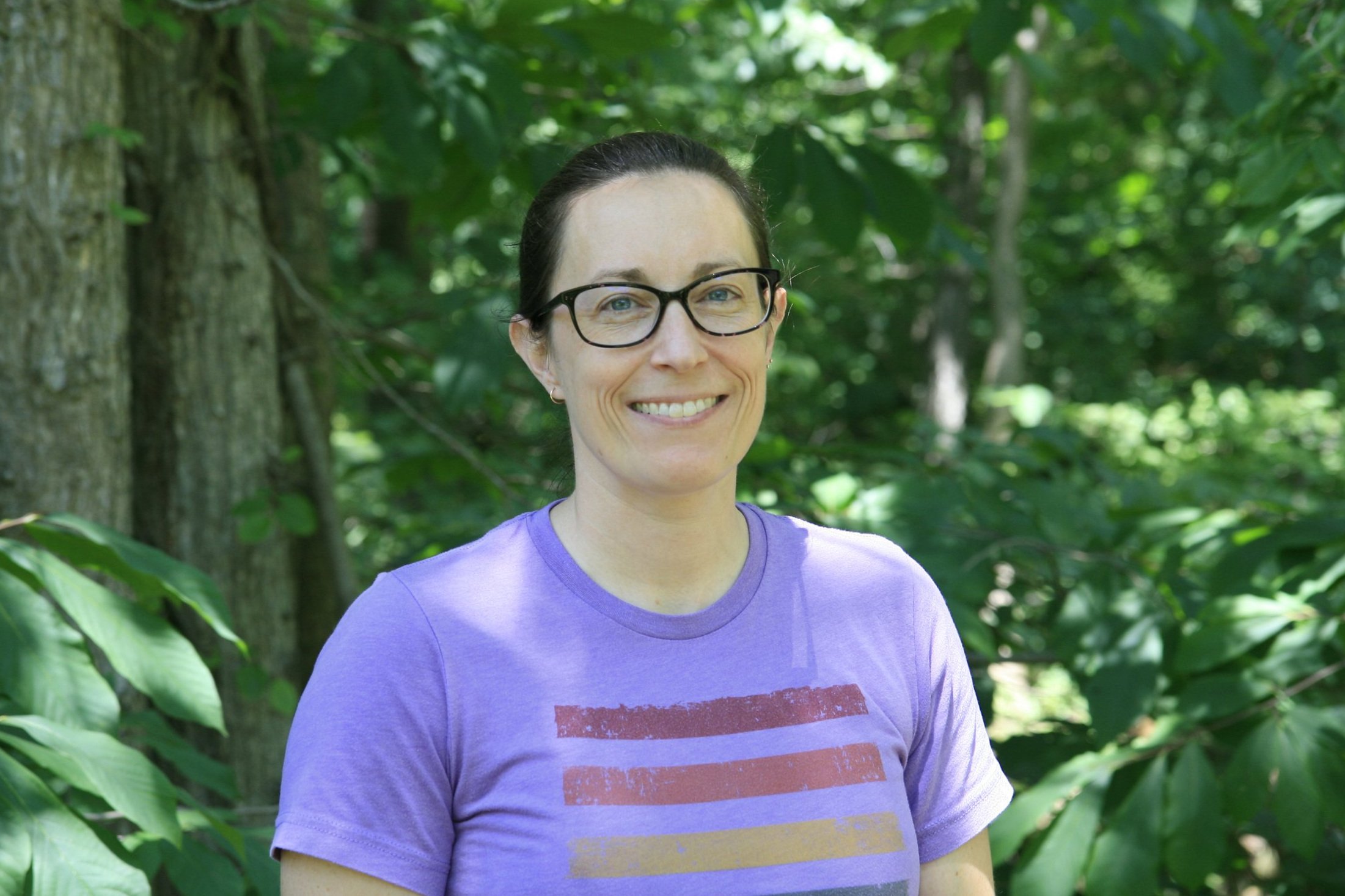Humans of Tyson 2023
Kasey Fowler-Finn
she/her
Associate Professor of Biology, Saint Louis University
Team Vibes
Vibrational communication has captivated me since undergrad. It’s the most common form of acoustic communication in the animal kingdom, but almost no one knows about it. Some collaborators and I started to wonder whether plants constrain which vibrational signals can occur in a single community of insects? As the idea developed, it became clear we needed someone with a community-level approach, so I contacted Kim [Medley] and she got involved. Our two perspectives merged to form this exciting project focusing on vibrational acoustics in local prairies, and how that relates to insect diversity.
We’re integrating data on the plants present, plant architecture, and insects using traditional ecological approaches like quadrat sampling in addition to vibrational recording. Tuesdays and Thursdays we record vibrations at Tyson, and other days we record at Shaw, Calvary Cemetery, and Litzsinger Road Ecology Center. I’ve recorded a lot in the past — to create four museum and art gallery exhibits based on vibrational sounds — but no one’s recorded vibrations at even a fraction of the bandwidth we are, and we’ve been hearing some really crazy things. I really didn’t expect this volume of signals, it’s mind blowing to me. When we go out, I feel like I’m in a barnyard. To help organize our data, we’ve come up with our own ways to describe the signals, like “armpit fart,” “monkey chicken,” or “duck-cow crank.”
“Having a diverse team means applying many unique perspectives and tackling questions from many different angles. Everyone has a new way of thinking about the project that affirms that interdisciplinary is the way to go. ”
Our team expanded this summer and includes students from Saint Louis University, Harris-Stowe State University, and Brown [University], as well as a high school intern. Our team includes biologists, computer scientists, and mathematicians. Our work requires a wide range of technical expertise, the development of new methodology, and novel integration across data sources. Having a diverse team means applying many unique perspectives and tackling questions from many different angles. Everyone has a new way of thinking about the project that affirms that interdisciplinary is the way to go. Anytime we meet as a group, people have comments or questions that improve the experimental design. In fact, the team members are thinking about this really deeply all the time — people are often researching things on the side unbeknownst to me, which is always really fun.
I hope this project will be going for at least a decade. The work is multiplying into numerous long-term projects with collaborators I really enjoy working with. We started out thinking we’re just asking one question (and not really knowing how!) and have revealed all these other really interesting related questions. It’s also opening new avenues for research, and we’re combining disciplines in very unique and novel ways.



